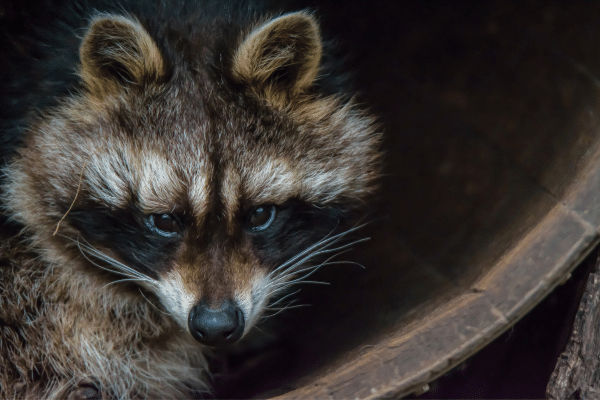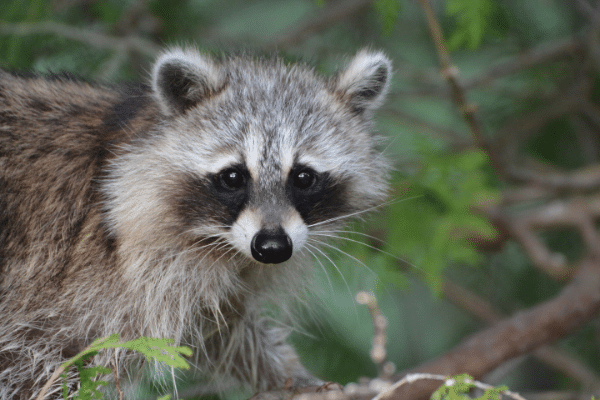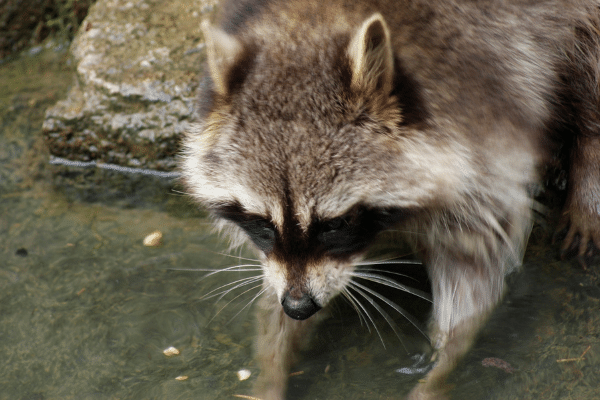- Home
- Raccoon Trapping
- Raccoon Facts
Raccoon Facts
This post may contain affiliate links so I earn a commission.
If you're looking for fun and interesting raccoon facts you've come to the right place!
Raccoons are a common sight in almost any neighborhood.
Whether you live in a crowded urban environment or you don't have a neighbor in sight, chances are you have a raccoon living nearby.
Raccoons are native to North America and they can be found in almost any part of the United States.
They're also common in Russia, Germany, Japan and parts of Canada and Mexico.

For most of us, we associate a raccoon with its most identifiable feature, their black mask.
Raccoons have a very distinctive black mask of fur that surrounds its eyes.
While it's not known exactly why they have the mask, some believe it reduces glare and helps them see better at night.
They have very good night vision and their eyes are well adapted for seeing green light, but it's believed raccoons can not see other colors or they distinguish color poorly.
Raccoon Habitat
Raccoons have an amazing ability to adapt to a wide variety of climates and habitat conditions.
Originally, raccoons lived in the tropics but they have successfully migrated north and now thrive in much colder conditions.
Raccoons generally live in hollow logs or a cavity in a tree, but as they continue to expand into urban areas they don't hesitate to live in barns, attics or other nearby man made structures.
Raccoon populations do really well in urban environments.
The abundance of human food left in dumpsters, a lack of natural predators like coyotes or fox, and general hunting and trapping restrictions allow them to thrive.

In cold winter climates, raccoons will sleep for long periods of time but they don't actually hibernate.
In the fall they will prepare for the cold by packing on extra body fat to help them survive the winter.
Raccoon Facts - Food And Diet
Raccoons are omnivorous and their diet is pretty much influenced by their environment.
In a rural environment they enjoy plants, insects, berries, frogs, rodents and crayfish.
In an urban environment their diet consists of garbage, vegetables and plants from a nearby garden, or pet food left over at a nearby house.
One unique eating characteristic is the animals preference for "washing" their food.

Although it's not understood exactly why they do it, the raccoon is one of the only animals that will quickly dunk its food several times in water (if it's nearby) before eating it.
Physical Features
Raccoons are commonly referred to as "ringtails" because of their distinctive bushy tail that has black and brown colored bands.
They weigh about 22 pounds and measure 30 to 36 inches, but some males have been known to grow much larger.
They're excellent swimmers and are agile on land and in trees.
A raccoon has very nimble front fingers giving it great dexterity.
They can open jars, untie knots and easily hold onto things.
Reproduction
Raccoons give birth in the spring to about 3 or 4 babies each year.
Their eyes are closed until they are about 20 days old and they don't develop their distinctive black mask or ringed tail until they're older.
Mother raccoons can be very protective of their young.
Although it can vary, raccoons live for around 4 to 5 years in the wild but in captivity they have been known to live for 20 years.
Raccoon Facts - Overall
Although they may be a nuisance when they raid your garbage can or campsite, raccoons are very intelligent creatures.
In fact, research shows that although they have a relatively small brain, they're on the high end of the intelligence scale compared to other animals.
This intelligence allows them to solve complex problems, which is a very unique animal trait.
Whether you have a love or hate relationship with raccoons, these raccoon facts clearly show they're very interesting animals that you're bound to run into no matter where you live.



